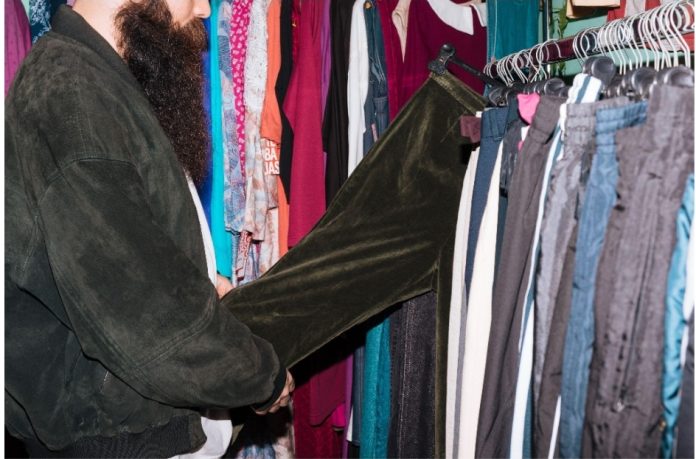As vintage fashion continues to dominate runways, social media, and boutique shelves, more and more retail store owners are searching for reliable ways to stock their collections with authentic, stylish, and profitable vintage pieces. But sourcing high-quality vintage clothing — especially in bulk — can be challenging without a solid strategy and trustworthy partners.
If you’re a boutique owner, online seller, or fashion entrepreneur looking to step into the world of vintage clothing wholesale, this guide will walk you through the essentials: where to look, what to look for, and how to ensure your inventory stands out from the crowd.
Why Vintage Clothing Is Booming in Retail
Before diving into sourcing strategies, it’s important to understand why vintage is so attractive — not just to consumers, but to retailers too:
- Timeless appeal: From ’90s denim to ’70s blouses, vintage items are unique and always come back in style.
- Sustainable fashion: Consumers are more eco-conscious than ever, and vintage offers a way to shop ethically and reduce waste.
- Higher margins: When sourced well, vintage clothing can offer strong profit margins, especially for curated stores.
- Exclusivity: No two pieces are the same — a major draw for fashion-forward shoppers looking for original style.
Step 1: Know Your Market
Before buying in bulk, define your niche. Are your customers into Y2K fashion, classic Levi’s denim, or high-end designer vintage? Do they prefer casual sportswear or luxury items?
Your ideal customer will guide what categories you need to focus on. Popular niches include:
- 90s and 2000s streetwear (Adidas, Nike, Champion)
- American vintage (Ralph Lauren, Tommy Hilfiger, Levi’s)
- European designer vintage (Versace, Armani, Missoni)
- Workwear and military surplus
- Retro sports jackets and graphic tees
Once you know your focus, you’ll be ready to start sourcing inventory that matches your customers’ taste and budget.
Step 2: Choose the Right Vintage Clothing Wholesale Partner
This is the most important part of the process. The quality of your supplier directly affects your brand reputation, product turnover, and profitability. Here’s what to look for:
✅ Specialization. Look for vintage suppliers in Europe who specialize in your niche — whether that’s branded sportswear, premium vintage, or mixed categories. A specialized supplier is more likely to offer consistent quality and better sorting.
✅ Transparent Grading System. Reputable wholesalers sort their products by grade (e.g., Cream, Grade A, Grade B). Make sure you understand what each grade means in terms of condition, labeling, and wear.
✅ Handpicked vs. Unsorted. Handpicked lots are more expensive but offer much higher value and faster resale. If you’re running a curated boutique, this is often the better option. Some suppliers, like Italian Vintage Wholesale, allow you to order handpicked collections in various categories.
✅ Country of Origin. Italy, the UK, Germany, and the Netherlands are known for excellent secondhand infrastructure. Italian suppliers are especially valued for sourcing premium European and American brands in good condition.
✅ Flexibility and Support. Great wholesale partners offer flexible lot sizes, reliable shipping, and responsive customer service. Look for companies that provide custom orders and detailed item breakdowns.
Step 3: Visit a Vintage Warehouse (If You Can)
If possible, plan a visit to a vintage clothing warehouse. This gives you the opportunity to:
- Inspect product quality firsthand
- Learn how items are sorted
- Build a relationship with the supplier
- Handpick pieces if allowed
Italian Vintage Wholesale welcomes B2B clients to their warehouse in Italy and also offers video consultations — a great option for those who can’t travel but still want control over their sourcing.
Step 4: Start with a Test Lot
If you’re new to a supplier, start with a small or medium-sized test order. This allows you to:
- Evaluate quality and accuracy of grades
- See which categories perform best in your store
- Minimize risk before scaling up
Pay attention to packaging, labeling, delivery times, and customer service. A professional operation in these areas is often a good sign of long-term reliability.
Step 5: Diversify Your Categories Strategically
While having a niche is important, offering complementary categories can increase average order value and customer retention. For example:
- Pair vintage jeans with graphic t-shirts
- Add accessories like belts, scarves, or bags
- Offer seasonal collections — e.g., ski jackets in winter, linen shirts in summer
Suppliers like Italian Vintage Wholesale offer wide category options, from denim and leather jackets to branded polos and mixed vintage packs, making it easy to build varied collections from one trusted source.
Step 6: Stay Consistent with Restocks
One of the challenges of selling vintage is that inventory is always changing. Once you find a supplier with consistent quality and supply, it’s crucial to restock regularly.
A good wholesale partner will notify you about:
- New arrivals
- Limited edition categories
- Seasonal stock availability
Consider setting up a restock calendar or pre-orders to keep your store fresh and your best-sellers in stock.
Final Thoughts: Partnering for Success
Sourcing vintage clothing for retail doesn’t have to be risky or chaotic. With the right approach and wholesale partner, you can build a sustainable, profitable, and stylish business that keeps customers coming back for more.
At Italian Vintage Wholesale, we help B2B retailers across Europe source high-quality vintage clothing that sells. From handpicked lots to bulk orders by category, our team ensures every piece is selected with care and curated for value. Whether you’re launching your first shop or expanding an established business, we’re here to support your growth.








